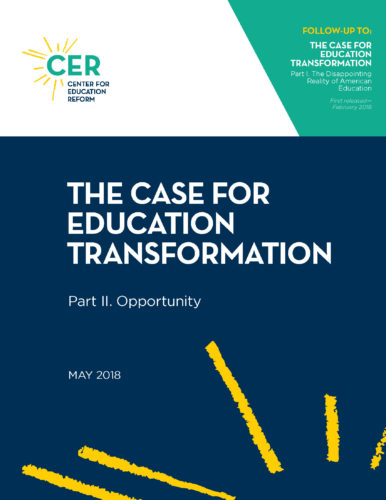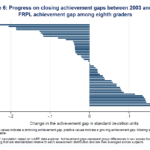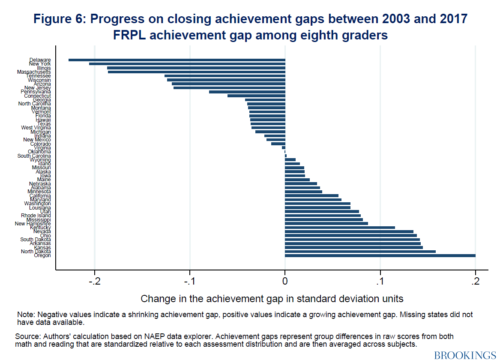REFLECTIONS. Last week America celebrated National Charter Schools Week. In the 27 years since the founding of the charter school movement, tremendous progress has been made in the number of schools established, and in the wealth of innovative opportunities they offer to children, families, teachers and communities.
Each day of NCSW, schools, educators, advocates and thought leaders produced a combo of thousands of stories, data points and reflections about the role charters have played in transforming how public education works. Parents, policy advocates, legislators – and some of brightest minds in the areas of education technology, pedagogy, curriculum, teaching and learning have helped create a vibrant environment for student success among more than 3 million students who annually benefit from charter school education. As we reported last week however, despite that success, the reality is charters are “Opportunities Under Siege.” We took an unflinching look at the forces and foes that could jeopardize all the hard-fought victories and advancement of the innovation and opportunity that 7,000 charter schools have delivered.
Checkout our NCSW microsite full of resources, daily releases, Op-Eds, media engagement, and the Reality Check with Jeanne Allen podcasts with pioneers and advocates such as Success Academy founder Eva Moskowitz, charter innovator, scholar and author, Sarah Tantillo and respected pioneer who participated in the birth of the modern Charter School Movement, Howard Fuller. We explored the drivers of change, diversity and world-class education and those who strive to un-do this vital work. Our goals for this week were to galvanize charter school educators and administrators against teachers’ union pressures for strikes and walkouts, dispel false claims to set the record straight in the media, reenergize parents and students, and bring urgency to legislators to pass strong charter laws and fund the ones already passed.
LOOMING STORM CLOUDS IN NORTH CAROLINA gather as union-backed strikes are scheduled for Wednesday May 16th in Raleigh with attendance expected to be high. This is another in a wave of coordinated efforts to engage charter school teachers to abandon their classrooms and their students under the façade of solidarity to suit their own agenda, optics and ultimately their coffers. This is the fifth in a series of walk-outs and sick-outs being encouraged by the National Education Association (NEA). The first was in West Virginia and lasted nine days. Subsequently, the NEA encouraged teachers in Oklahoma to walk, even though they won a 16 percent raise from the Oklahoma legislature before the nine-day walk-outs even began. Then there was Kentucky, followed by Arizona where new money for schools was already on the table prior to that walk-out as well.
A WORD TO ALL CHARTER EDUCATORS: While we appreciate that teachers are naturally collaborators, this national walk-out strategy is designed to undermine the very freedoms that charter schools afford not only their families but all who work there. The NEA believes all charters should fall under the same rules as traditional public schools, which, in effect, would make them no different than traditional schools. They fight charter schools in school halls and state halls. They are calling it a walk-out because the public does not like strikes, and they have poll-tested the words. (The NEA spends $34 million a year on its communications.) And they are calling it a walk-out because they don’t have the authority to make anyone do anything in a right-to-work state. However, this is a strike, plain and simple. And by striking with the union, you are joining the fight to close charter schools.
THE CASE FOR EDUCATION TRANSFORMATION: CER released the second in a three-part series for The Case for Education Transformation – Opportunity. Following last month’s release of Part I– The Disappointing Reality of American Education, which included 2018 National Assessment of Educational Progress (NAEP) alarming data revealing that the lowest performing students in the nation are faring worse than they did on the same assessment in 2015. Part II also assesses what a new opportunity agenda should look like and presents a strategic road map to achieve it.
CER SALUTES 20 YEARS OF EMPOWERING FAMILIES. The Children’s Scholarship Fund is 20 years old, and celebrates this milestone tonight in NYC. If you are in New York City – COME! Tickets are available to join the celebration and special memories of visionary founders Ted Forstmann and John Walton. And at CSF’s helm for the entire 20 years the organization has been supporting more than 166,000 students with scholarships is president and chief operating officer, Darla Romfo. We spoke with her on this week’s Reality Check with Jeanne Allen. Hear why even with today’s availability of greater educational choices, Darla says CFS’s work is more important than ever, “It’s still the right thing to do – to keep trying to make a difference,” she urges, “You can never give up.”















